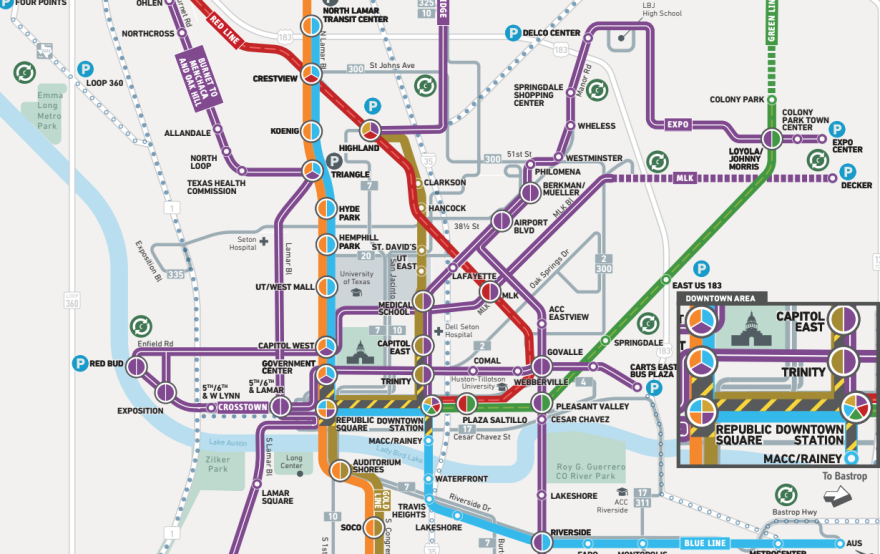Capital Metro is preparing to bring more electric buses and high-frequency service to Austin.
The transit authority's governing board approved the purchase of almost 200 battery-powered buses this week and announced Cap Metro will break ground on two new high-frequency bus lines in the coming months.
The board voted unanimously Monday to spend $255 million on 197 electric buses from two different companies, paving the way for the transit authority's gradual transition to an all-electric fleet. The money authorized by the board will also pay for chargers, training for staff and warranties.

The new vehicles add to the existing 12 electric buses already in service. The transit agency announced on Earth Day 2019 it would be transitioning its fleet of more than 350 diesel-powered buses to all battery-powered vehicles by around 2035.
The competitively bid contracts are with Minnesota-based New Flyer of America and Proterra out of Greenville, South Carolina. Each 40-foot electric bus costs about $917,000. The 60-foot buses go for around $1.37 million.
That's significantly more than similar 40- and 60-foot diesel-powered buses, which in 2017 cost Capital Metro about $535,000 and $760,000 respectively.
Capital Metro is conducting an analysis to compare the lifetime costs of electric buses to diesel buses, but "in the end, the electric buses should cost less," Capital Metro's Director of Vehicle Maintenance Andrew Murphy told board members. He pointed to electric buses' lower fuel and maintenance costs.
From a rider's perspective, electric buses are quieter, emit less heat and don't blast diesel exhaust in your face at the bus stop. They also provide smoother rides. They have a lower center of gravity and single-gear transmission, so the buses don't jerk as much as diesel buses when the driver shifts gears to accelerate.
Capital Metro also offered a glimpse this week of its timeline for expanding high-frequency bus service. Construction is set to begin in December on the $44.6 million Expo Center MetroRapid Line running from the Travis County Expo Center to UT Austin and downtown.

A month later, in January 2022, Capital Metro aims to start construction on the $48.9 million Pleasant Valley Line, connecting the Mueller development to the Goodnight Ranch neighborhood on Slaughter Lane.

Both MetroRapid lines are scheduled to launch in mid-2023. In late 2023, Capital Metro plans to begin service on an extension of the MetroRapid 803 line from the Westgate Transit Center south along Menchaca Road to Slaughter Lane.
Service on a separate extension of MetroRapid service south to Oak Hill will be delayed until 2026 because of a $674 million highway project at the Y in Oak Hill. Cap Metro wants to wait until TxDOT's project is complete.
Bus shelters along the Expo and Pleasant Valley lines are expected to have electronic screens showing when the next buses arrive, along with other information. Cap Metro says each stop will have ticket vending machines and the potential for things like public art and trees. Security cameras will be installed to monitor the area.

The projects are part of a $170 million bus rapid transit component from the $7.1 billion Project Connect proposal authorized by voters in November in exchange for a property tax rate increase of 8.75 cents per $100 of property value.











